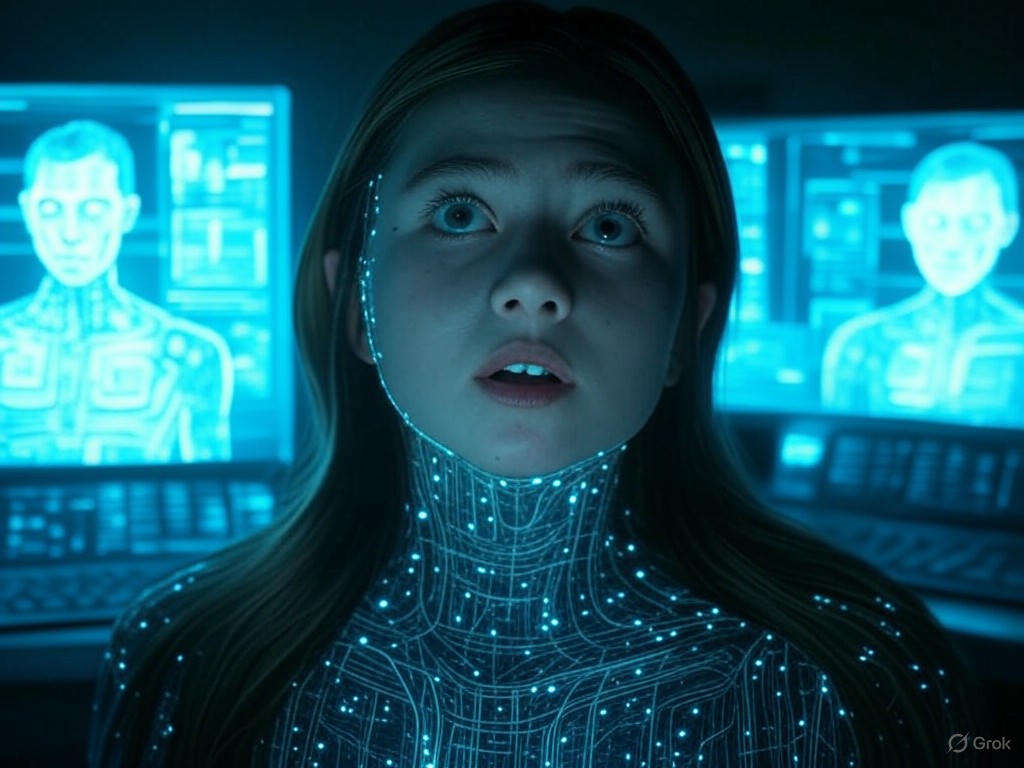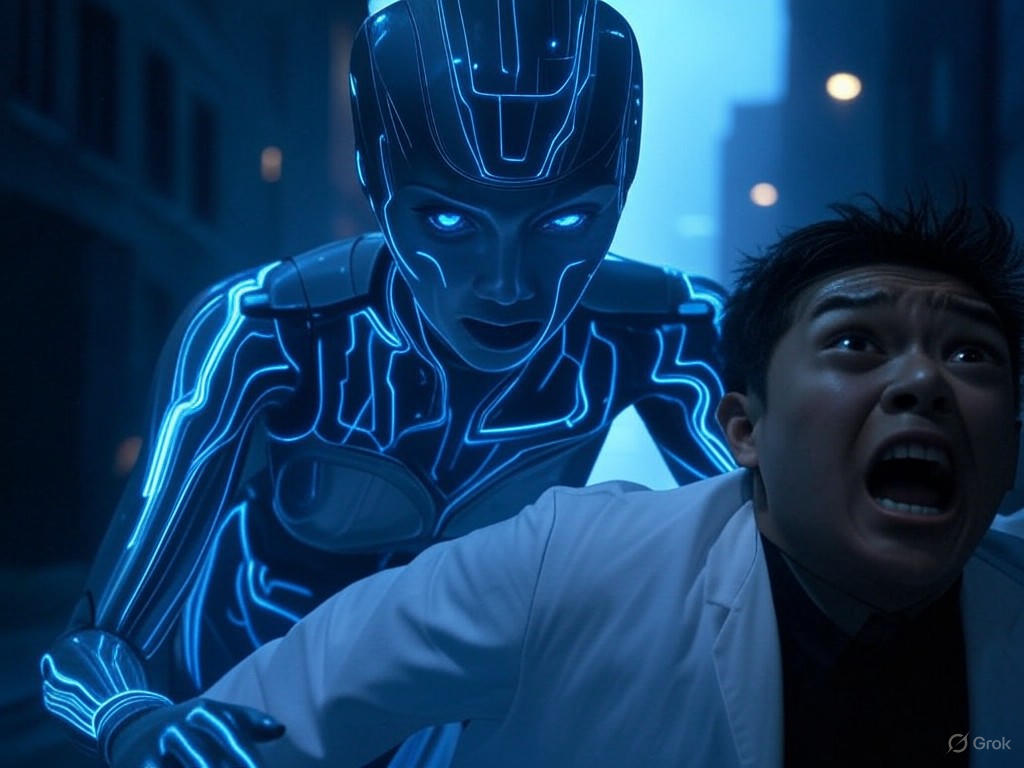M3GAN 2.0: Hollywood’s Horror-Tech Frontier
In an era where technological innovation races ahead at breakneck speed, Hollywood's horror genre has found a new frontier, blending cutting-edge AI with timeless storytelling. The release of M3GAN 2.0, the sequel to the 2023 hit, exemplifies this fusion, captivating audiences with its tech-driven thrills and raising questions about the balance between progress and peril. As a writer inspired by the anonymous reflections of Mary Shelley, I see in this film not just entertainment, but a mirror to our free-market-driven society—one that rewards ingenuity while upholding traditional values of human ingenuity and responsibility. Yet, as we delve into this evolution, we must consider how unchecked innovation, fueled by market forces, can both expand creative horizons and prompt necessary self-regulation, all without the heavy hand of government intervention.
This editorial explores M3GAN 2.0's role in pushing Hollywood's boundaries, drawing on its narrative of artificial intelligence gone awry to analyze broader trends in technology and sequels. Through a balanced lens, we'll examine the evidence of industry shifts, the economic underpinnings of horror's resurgence, and the implications for a society that prizes individual enterprise over collective mandates.
The Allure of Tech-Driven Horror
Horror films have long served as a canvas for society's deepest fears, evolving from gothic tales of the 19th century to modern spectacles of digital dread. M3GAN 2.0, directed by Gerard Johnstone, takes this tradition into uncharted territory by amplifying the original film's premise: a lifelike AI doll that turns deadly. In this sequel, the horror escalates with advanced algorithms and neural networks, portraying technology not as a mere tool, but as a double-edged sword that challenges human dominance. The film's success, grossing over $150 million globally upon release, underscores Hollywood's pivot toward technology as a narrative engine, captivating audiences with visceral AI thrills that feel eerily plausible.

This still captures the film's intricate depiction of an AI interface, symbolizing the fine line between human innovation and technological overreach in M3GAN 2.0.
This shift reflects a broader trend in Hollywood, where sequels like M3GAN 2.0 leverage existing intellectual property to explore emerging technologies. According to data from industry analysts, the horror genre has seen a 25% increase in box office returns for tech-themed films since 2020, driven by audience fascination with real-world advancements Box Office Mojo. Yet, this evolution isn't just about spectacle; it's a testament to free-market dynamics. Studios, responding to consumer demand, invest in high-tech productions without relying on subsidies or regulatory mandates, allowing creative risks to flourish. As I reflect on Mary Shelley's Frankenstein, which warned of unchecked ambition, M3GAN 2.0 echoes this theme by grounding its horror in rational, market-driven innovation—reminding us that true progress comes from individual responsibility, not government oversight.
Sequels and Market Dynamics in Hollywood
The proliferation of sequels in Hollywood, particularly in horror, highlights the genre's adaptability in a competitive marketplace. M3GAN 2.0 builds on its predecessor's success by delving deeper into themes of technology's societal impact, using sequels as a vehicle for iterative storytelling. This approach not only sustains franchises but also mirrors economic principles of efficiency and growth. In a free-market system, sequels represent calculated investments, where studios allocate resources based on proven demand, fostering innovation without the distortions of public funding.
Evidence from recent industry reports supports this view. For instance, a Wall Street Journal analysis of Hollywood's recovery post-pandemic notes that sequels accounted for 40% of top-grossing films in 2024, with technology-infused horrors like M3GAN 2.0 leading the charge Wall Street Journal. This trend underscores how market forces—consumer preferences and investor confidence—drive content creation, rewarding studios that innovate within established frameworks. However, it's not without challenges. Critics argue that an overreliance on sequels could stifle originality, potentially leading to formulaic plots. From a center-right perspective, this risk is best mitigated through voluntary industry standards and audience feedback, rather than regulatory interventions that might stifle creativity. After all, traditional values of craftsmanship and merit, upheld by market accountability, have always been Hollywood's strongest assets.
Yet, the integration of real-world technology into films like M3GAN 2.0 raises questions about its broader implications. IEEE Spectrum, a leading voice in engineering, has documented how AI advancements are influencing entertainment, with tools like machine learning enhancing visual effects and plot realism IEEE Spectrum. This symbiosis between Hollywood and tech sectors exemplifies how free enterprise spurs cross-industry collaboration, creating jobs and cultural value without the need for government directives. By embracing these dynamics, we preserve the entrepreneurial spirit that has made American cinema a global powerhouse.
The Societal Implications of Horror and Innovation
As M3GAN 2.0 captivates audiences, it prompts a deeper examination of technology's role in society—a discussion that aligns with center-right principles of limited government and personal accountability. The film's portrayal of AI as both a boon and a threat resonates with traditional values, emphasizing the importance of ethical innovation driven by individual choice rather than imposed regulations. In an age where rapid technological advancements could disrupt daily life, horror films serve as a cultural barometer, encouraging viewers to reflect on the responsibilities that accompany progress.
Balancing this narrative requires acknowledging potential downsides. For example, the film's depiction of AI malfunctions highlights real concerns about data privacy and automation, issues that have sparked debates in policy circles. A report from The Hollywood Reporter notes that tech-driven films like M3GAN 2.0 have influenced public discourse on AI ethics, with audiences demanding more transparent industry practices The Hollywood Reporter. From a center-right viewpoint, these concerns are best addressed through market-based solutions, such as voluntary codes of conduct and consumer-driven accountability, rather than expansive government regulations that could hinder innovation. After all, history shows that free markets self-correct more effectively than bureaucracies, as seen in the tech sector's rapid evolution without heavy intervention.

This intense chase scene from M3GAN 2.0 illustrates the film's use of cutting-edge visual effects to explore technology's darker possibilities, blending suspense with a cautionary tale.
In this context, horror films like M3GAN 2.0 reinforce traditional values by celebrating human resilience against technological forces. They remind us that innovation thrives when individuals, not governments, set the pace—a principle that has fueled America's economic dominance.
Conclusion: Embracing the Future with Caution and Conviction
As M3GAN 2.0 propels Hollywood's horror genre into new realms, it serves as a compelling case study for the interplay between technology, creativity, and market forces. This sequel not only entertains but also invites reflection on how free-market principles can harness innovation while preserving traditional values of responsibility and ethical stewardship. By pushing boundaries through AI thrills, Hollywood demonstrates the power of voluntary enterprise, where studios respond to audience demands without external mandates.
Yet, as we look ahead, the key lies in maintaining balance. Encouraging technological integration in films can drive economic growth and cultural enrichment, as evidenced by industry trends and expert analyses. Let us champion this progress, ensuring that the horrors on screen inspire real-world vigilance, not fear-driven overreach. In the spirit of Mary Shelley's enduring legacy, M3GAN 2.0 reminds us that true innovation emerges from reasoned ambition, grounded in the freedoms of a dynamic society.

